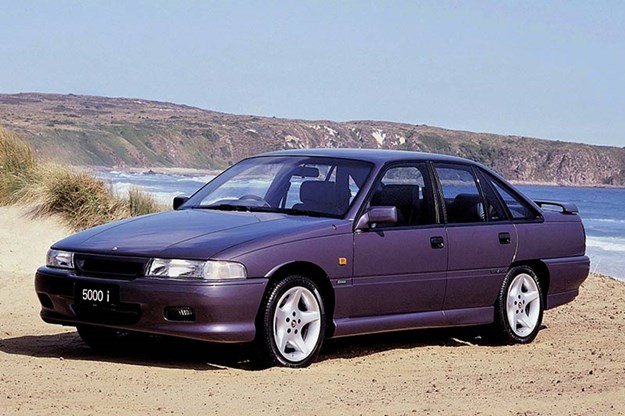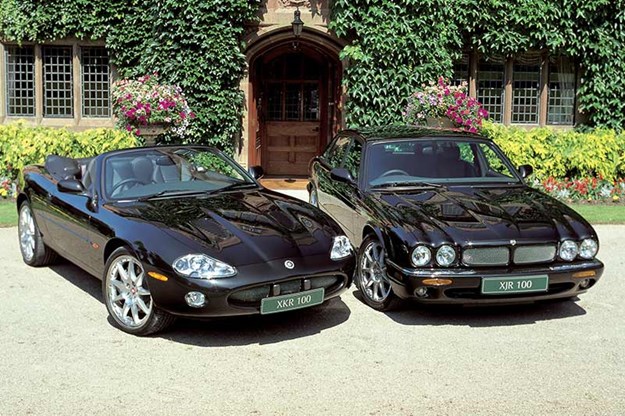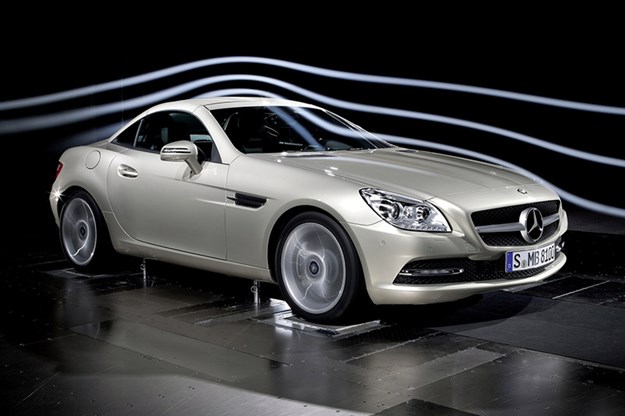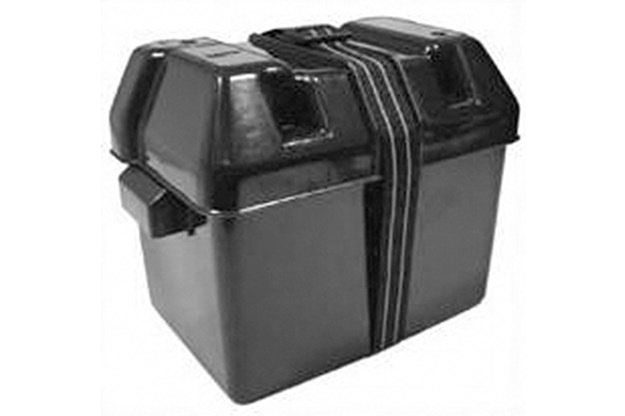Parts drought, dodgy sparks and Benz advice - Mick's Workshop 449



|
Parts drought, mystery electrical ailments, sulphurous steel and used Benz advice
One of the biggest problems independent workshops like mine are facing at the moment is the manufacturers not supplying parts any more, as a way of protecting their business. What was once a small problem is now becoming quite a large one.
For example we were recently working on a 1997 Mitsubishi Pajero – not an extremely old car. I couldn’t buy anything for it locally and was told anything I needed might have to be ex-Japan.
Having a few old contacts in the game, I managed to get the use of a dealership electronic parts search and didn’t get a lot of joy. The wording in these cases used to be "no longer available" or "obsolete". The wording now is "discontinued".
That leaves you in the difficult position of talking to a customer, you have the front end of their car apart, and now you can’t buy the needed component!
This introduces another issue, where it now takes a lot of time to track down a solution, through parts searches, ringing around and leaning on contacts. You just have to dedicate the time. Who covers that?
It’s always been a bit of an issue on some older cars, but now we’re seeing it on much younger models.
I believe the manufacturers are protecting themselves and I understand that. Their business is to sell new cars, not repair the old ones. Once they would have encouraged you to take an older model elsewhere, now we’re not even getting the parts supply.
What we did of course was look for aftermarket options. Now I’ve always preferred the genuine component when it’s available, but we had no choice in this case.
We found an aftermarket part on Adelaide and had it shipped over to Melbourne to find it wasn’t even close. It wasn’t within 5mm of fitting and it was crooked. So there were two more days wasted.
I’m not saying there’s a solution to this, but it’s something to be aware of. If you’re taking a car with a few years on it into a workshop, chances are it won’t be ready tomorrow. Increasingly, that’s something the owner and the workshop need to talk about.
You might want to keep this in mind when you go to buy an older car, even if it is a ‘youngtimer’. If in doubt, go for something that has a strong enthusiast following, which just might help ensure an aftermarket parts supply.
LETTERS:
Rust Gods

Rust proofing is essential when doing a resto
Glenn Torrens is on the money regarding improved corrosion resisting processes introduced on later model cars over time. Back in the days of the HR Holden the steel coming out of Port Kembla tended to have a high sulphur content, and the HR was inflicted with rust starting from the inside out. Of all places the under bonnet area, (always dry, aided by engine heat), was commonly affected.
This was a time prior to the introduction of the ‘Basic Oxygen Steelmaking’ process, (BOS), by BHP at Port Kembla.
Back in the 1950s even the elevated sections of the floor pan, (where the front bench seats were mounted), used to rust out in the old US Fords, and of course the lower section of the driver’s footwell had no chance of beating perforation over time. Having the seats bolted through the floor to the chassis rails negated the need for urgent repairs.
Eric Waples
YOU’RE ABSOLUTELY right about rust from day one on a lot of these old cars, Eric. The best thing you could do if you were restoring one of those old cars is to have it media blasted back to bare metal and repair whatever shows itself. Then the best product on the market, which has been around forever, is the old Killrust two-part treatment. Once you have the metal reasonably clean, that stops the rust in its tracks.
These were the days when galvanizing was uncommon in Australian cars and I think it was VJ series Valiants, including the early Chargers, that were the first local makers to use it. The bodies were advertised as having a 10-year guarantee, but when they got to 20 and 30 years they still rusted away. Even galvanizing can’t stop rust eventually getting through, but it does slow it down.
Modern cars are generally far less prone to it.
Of course owners used to ritually go around their cars once a year or more with a can of fish oil and a brush, looking for rust-prone areas, and it was very effective. In fact we still use it some places on our restoration jobs. For example we’ll blow out the channels and fish oil them. It’s not as good a long-term solution as Killrust, but it has its uses.
The biggest problem we see is caused by well-meaning people parking their cars under trees. Then the leaves drop and get into the plenum, turn into mulch and eat away the material.
And it’s not just the plenum. We had a boxer engine Subaru in recently with leaves scattered around the engine bay, including around the exhausts – it was bound to catch fire one day.
If you want the car shaded and you’ve run out of shed space, wash it and use a cover.
When grand-dad went around his car with an air line, blowing out the dust and leaves from various nooks and crannies, then going over it with fish oil, he was right!
Walk Away?

Keeping it pristine
Enjoy reading your monthly column, with yourself being the owner/operator of a workshop I just wanted your advice please.
I have a few Holdens and HSVs and take them to my local mechanic for any repairs/servicing required, work undertaken has ranged from minor servicing to major work such as engine swaps.
The guys are friendly, fairly honest and would be summed up as "great blokes" but I’m not getting the desired outcome.
I have cars that still have unresolved issues, I explain to them the conditions required to generate the fault and encourage them to drive the cars for a distance so they can experience the same faults I do.
But how many times is fair to keep taking a car back? At what time does one decide yeah they’re great blokes but throwing good money after bad becomes tiresome when I just want things fixed.
Yes I’m fanatical about my cars, I know every scratch on each one but I’ve paid good, fair money for repairs and servicing. The reason I went to them is because they were "good blokes" but the attention to detail and resolving issues is lacking.
I have limited mechanical knowledge so have to go to a mechanic. It’s hard to find one that can be trusted, a rapport is built up over time especially when it comes to owning classic and performance cars.
Regardless of whether I’m a long-term customer there has to be a point where enough is enough and it’s time to cut my losses and find a new mechanic. I would appreciate any recommendations you can give me.
Chris Hodgson

Back in ‘79 owners helped diagnose their Holden’s faults with this handy checklist
WOW, THAT’S A tough one and I can sympathise with both sides on this. There are a lot of people out there who run a good business and are good at what they do, but are often knowledge-rich and time-poor.
Some jobs just take a disproportionate amount of time and workshops often get embarrassed about how long it’s taking. Can I charge for that and how do I explain it to the customer? Plus, I think there is an issue out there where attention to detail is falling away.
As my grand-dad used to say, it’s that two-bob’s-worth of finesse which really makes a job. And that’s not always on offer. Sometimes you have to bite the bullet.
The customer knows there’s something wrong with the car and relies on us to listen to their issue and then pursue the problem. Now if they haven’t got the time to provide that final bit of finesse, it is time to move on.
Finding a good mechanic is like finding a good doctor. Some of the younger generation mechanics out there leave people like me for dead on electronics, but don’t necessarily cover off the areas I do well.
How do you find what you need? Word of mouth is the best place to start, and I’d be talking to people in your club.
Sometimes you also need to have a conversation with your mechanic. Lots of workshops get beaten around the ears about what they’re charging, when you may well prefer to pay for the job to be done properly. It doesn’t hurt to remind people of that. Let us know how you get on.
Lights & Brakes

That really is a delectable pair of Jags
In issue 447 you ran a letter from Colin Francis about the XJR supercharged Jag with the weird electrical issues. He mentioned assorted fault lights kept coming up and the dash sometimes did Christmas tree impersonations.
I own an XKR of similar vintage, which has a lot in common with the XJR. A lot of those problems seem to stem from low battery voltage. A few tips: Don’t leave the keys in the car, and always lock it so it shuts down properly. Plus, put it on a trickle charger.
I hope you passed on my email to Colin as I went through all of those problems to find a simple fix.
Last issue you got on to the topic of brake and wheel shudder. My once-new Toureg had four sets of new front brakes in three years because of steering wheel shake and brake pedal shudder after about every 5-10k. Then a VW rep said to change a wheel bearing. That fixed it – who would have thought?
Ken Bryce
SOME GREAT advice there, Ken. First the electrics. You could argue that a lot of later model or ‘youngtimer’’ cars with more sophisticated electronics never entirely shut down, so battery health is absolutely critical.
And you’re absolutely right to point out that it can pay to lock them and remove the keys, as there are a lot of models out there that don’t ‘sleep’ properly until you do. Ed Guido once got caught out by this, leaving his Soarer Limited unlocked and then throwing a cover over it. The car immediately ‘saw’ that it was dark and switched on all the courtesy lights – including one at each external corner – so he could find it in the dark! Of course the battery was dead flat the next day.
I was really intrigued to read the issue with the wheel bearings on the Toureg and that story tells me Volkswagen knew about the problem. To me it’s a symptom of what we see with late model cars where the vast majority are built to very tight price boundaries and sometimes the quality suffers.
What I suspect has happened is you’ve had a misalignment in a double-row bearing and this isn’t an easy one to check. Where a ‘normal’ tapered bearing will tell you pretty quickly if something is wrong, as you get movement, a later double-row unit often doesn’t make it obvious. They tend to be noisy before they show any signs of play.
In the past we’ve mentioned the basic front end shudder diagnosis: If its in the brake pedal it’s probably warped discs; If it’s in the steering wheel, check out the bushes and steering. A double row bearing could well produce a vibration in the brake pedal.
Benz Buyer

I am considering buying a 2014 Mercedes SLK 200. The car has done 55,000kms.
Could you inform me of all the good and bad points of this car.
John Nawn
HI JOHN. There is plenty of road test information online for this series, so I’ll stick to the issues from a workshop perspective. In general, they’re a well-engineered car. Benz has tended to build to more competitive prices over the years, which owners of older models will tell you has resulted in a drop in overall quality. Not everyone agrees, and M-B overall has a good reputation.
What I’d be looking for are two main things: evidence of regular servicing. Engines of this era will put up with a lot, so long as the correct fluids are kept up to them. In any case, you’re talking of a low-mileage car. Operation should be crisp, and there should be no smoke.
The other thing is I’d look very carefully at is the operation and sealing of the roof. You’re after no squeaks or grinding or hesitation.
If there is an issue, it may be expensive to fix and could suggest a knock at some stage.
Okay, let’s add a third: Get someone who has an eye for it to go over the car, looking for evidence of crash repairs.
If you are serious about a particular example, I’d get your local workshop or motoring club to go over it as a precaution. Good luck with it.
TRIVIAL PURSUIT
Relocation

If you’re doing a big build, there can be real advantages in relocating the battery from the engine bay to the boot. For a start, you’re getting it away from the worst of the vibration and heat. Of course you need long cables to do this and I prefer to use arc welding wire for its low resistance.
Fighting words

The announcement of another attempt to revive Bristol cars had us wondering how many tin-tops borrowed their name from the company’s aircraft. Oddly enough the trend didn’t start until the 1980s, when we saw the emergence of the Beaufighter and Beaufort, the Brigand, the Blenheim and then the terribly generic Fighter. Sadly, none of them translated to huge sales.
Want some advice on a build or a potential car purchase. Heck we’ll even tackle long distance diagnosis. Drop us a line at uniquecars@primecreative.com.au
From Unique Cars #449, February 2021
Unique Cars magazine Value Guides
Sell your car for free right here
Get your monthly fix of news, reviews and stories on the greatest cars and minds in the automotive world.
Subscribe

.jpg)













